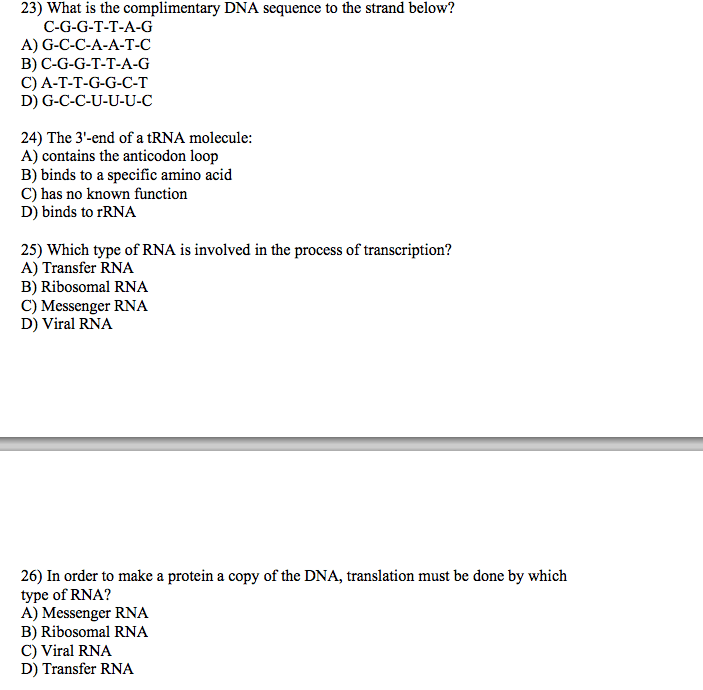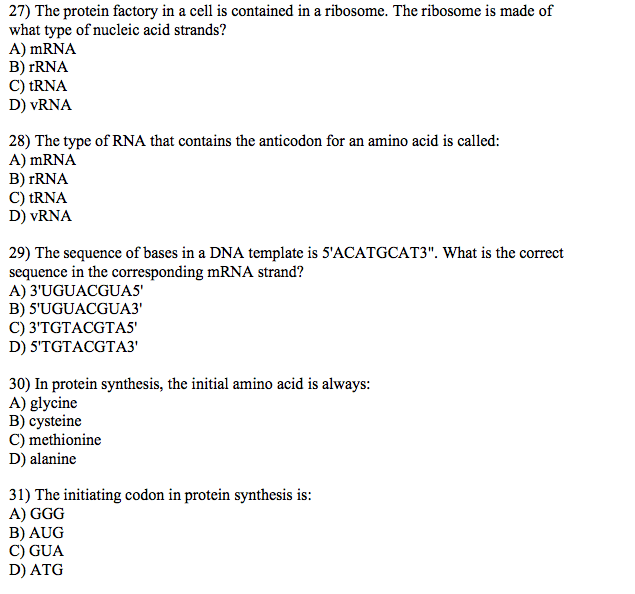1. _________________________ is the name of the process that produces proteins using RNA molecules.
a.Transcription
b Translation
c. Replication
d. Mutagenesis
2. The peptide bonding site on the ribosome:
a. A site
b. P site
c. E site
d. D site
3. The name given to the bond formed between two amino acids.
a. Hydrogen bond
b. Double bond
c. Peptide bond
d. Negative bond
4. __________________________ is the movement of the mRNA molecule on the ribosome to open up the A-site for the new incoming amino acid.
a. Transformation
b. Mutation
c. Translocation
d. Initiation
5. What does the term semi-conservative mean.
a. Replication of RNA is semi-conservative, each new strand consists of one old strand of RNA and one new strand of RNA.
b. Replication of DNA is semi-conservative, each new strand consists of one old strand of DNA and one new strand of DNA.
c. Replication of DNA is semi-conservative, each new strand consists of new strands of nucleotides.
d. Transcription of RNA is semi conservative.
6. This molecule functions during protein synthesis to recognize the codon and bring the proper amino acid back to the ribosome for translation.
a. mRNA
b. tRNA
c. rRNA
d. DNA polymerase
7. What is meant by the base-pairing rule.
a. Bases on a single strand of DNA are always found as pairs
b. Adenine always base pairs with guanine; cytosine with thymine
c. Adenine always base pairs with thymine; cytosine with guanine
d. Bases on a single strand of RNA are found in pair.
8. In this step of protein synthesis, amino acids are added to a growing polypeptide chain.
a. Initiation.
b. Elongation.
c. Termination.
d. Transpiration.
9. Three complementary bases found in a mRNA are called ____________________.
a. Anti-codon.
b. Triplet.
c. Doublet.
d. Codons.
10. Which statement best describes the job or function of the messenger RNA.
a. Carries the map of the gene sequence in the form of codons to the cytoplasm
for translation of the protein.
b. It transfers amino acids to the ribosome for protein synthesis.
c. It forms the ribosomes.
d. It helps replicate DNA.





